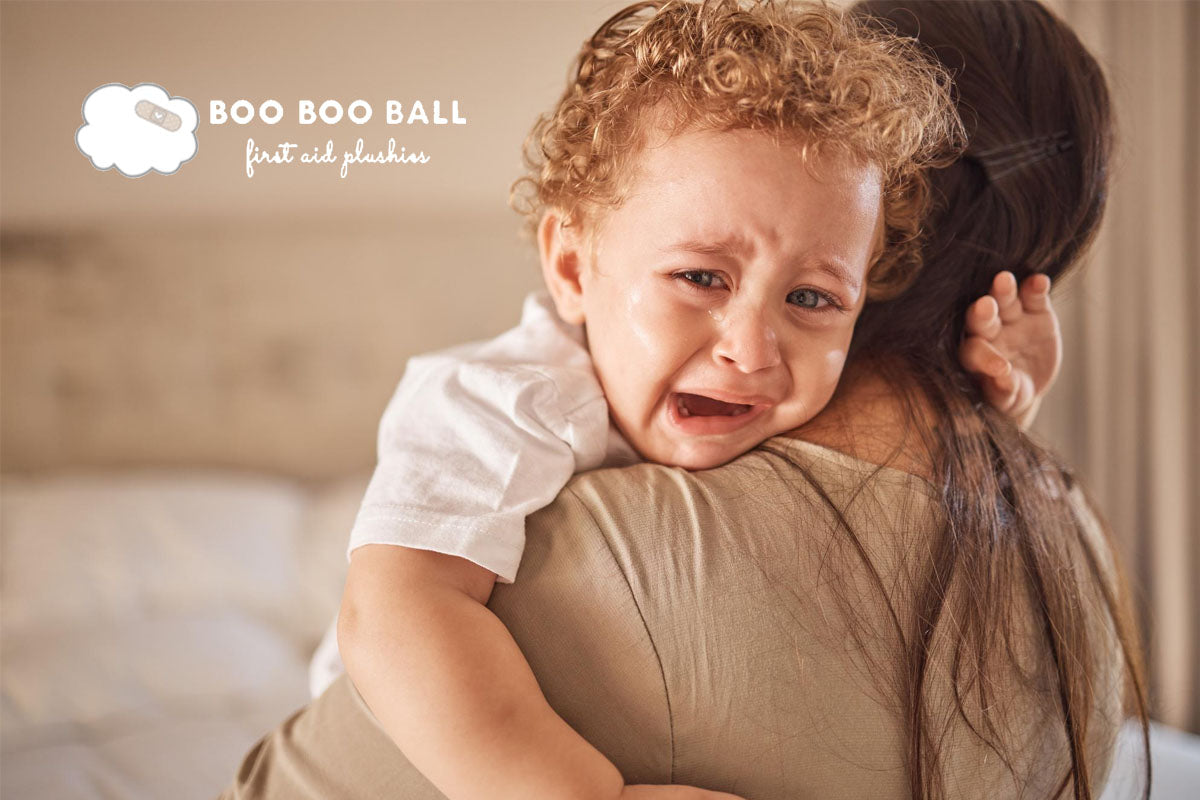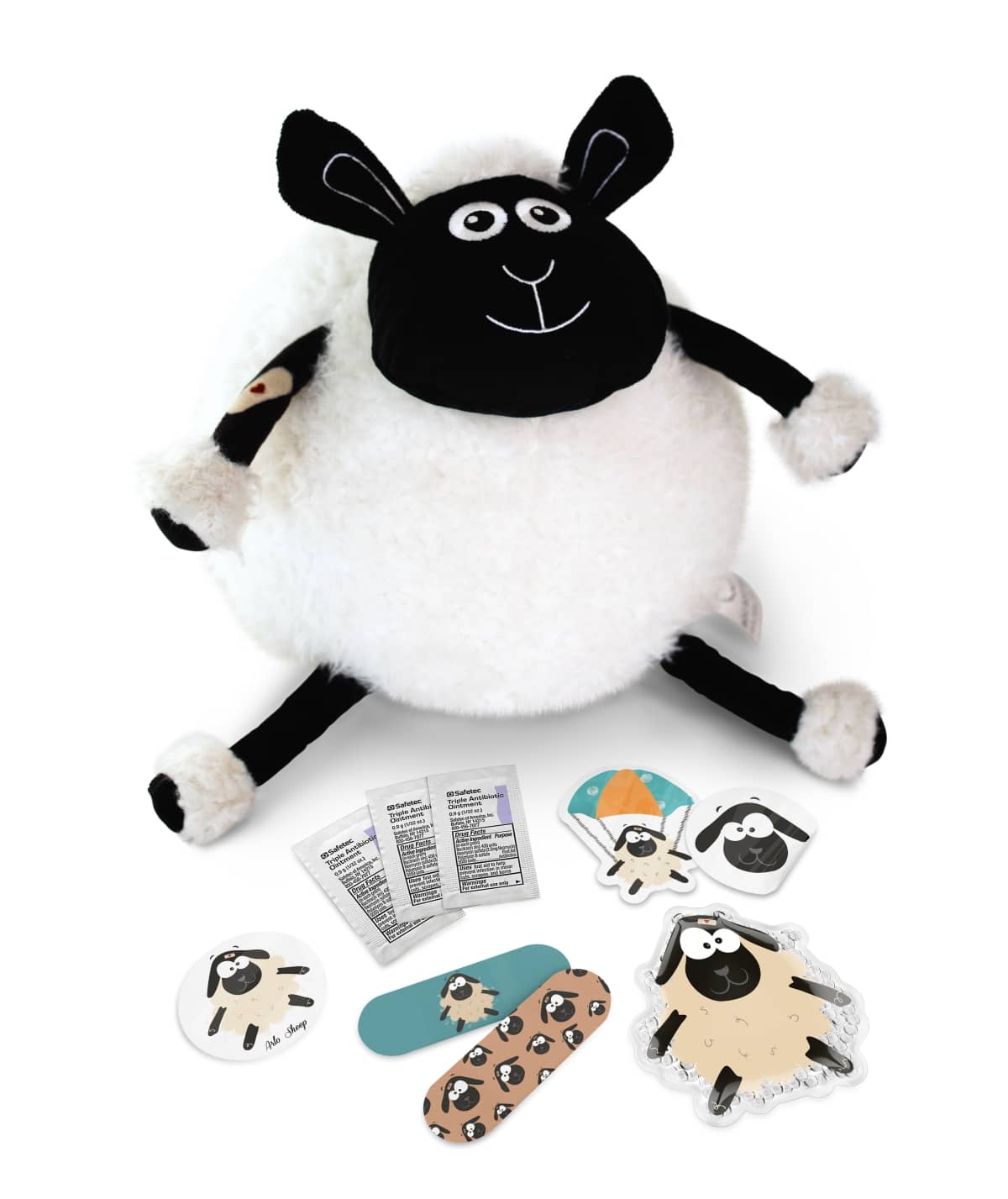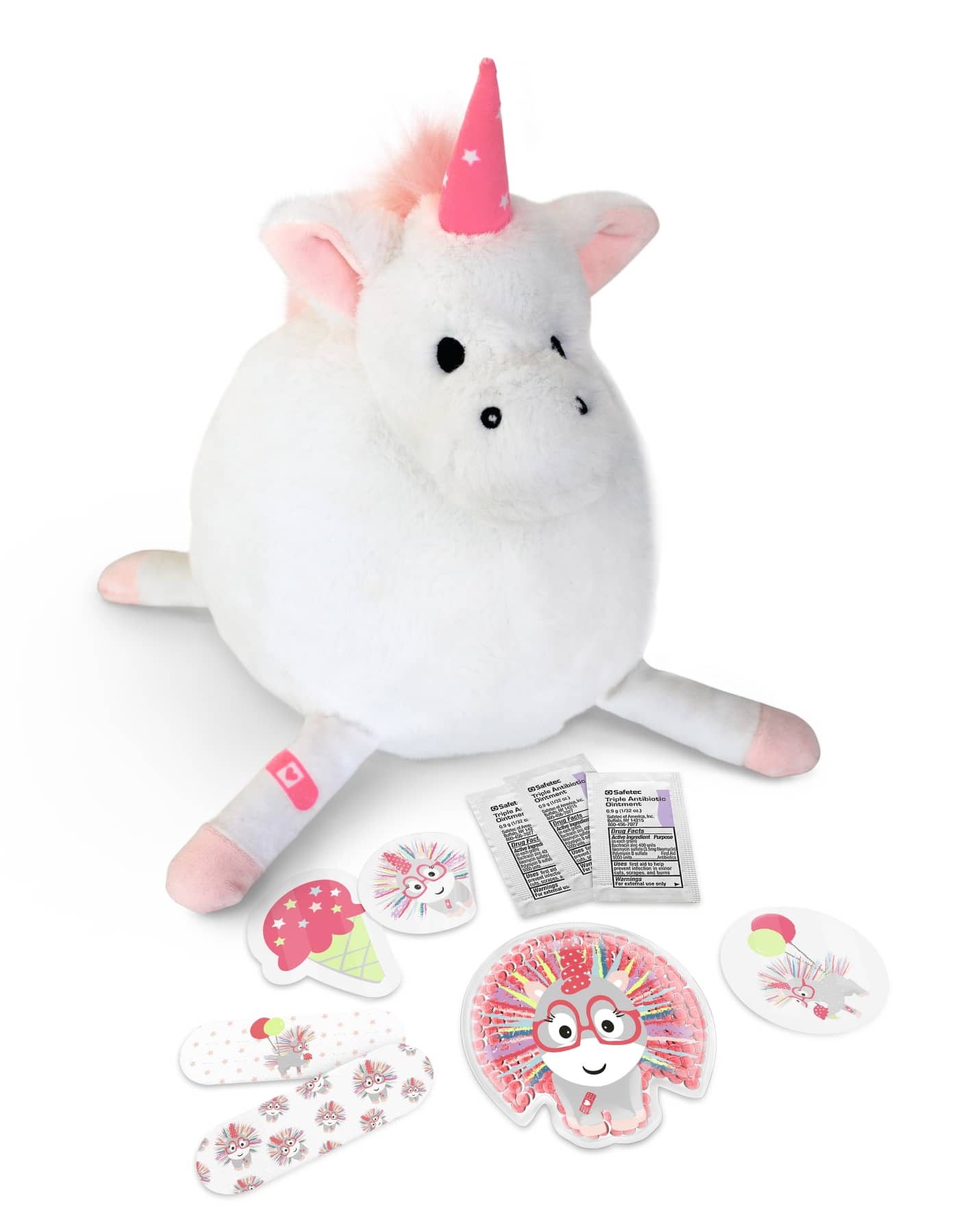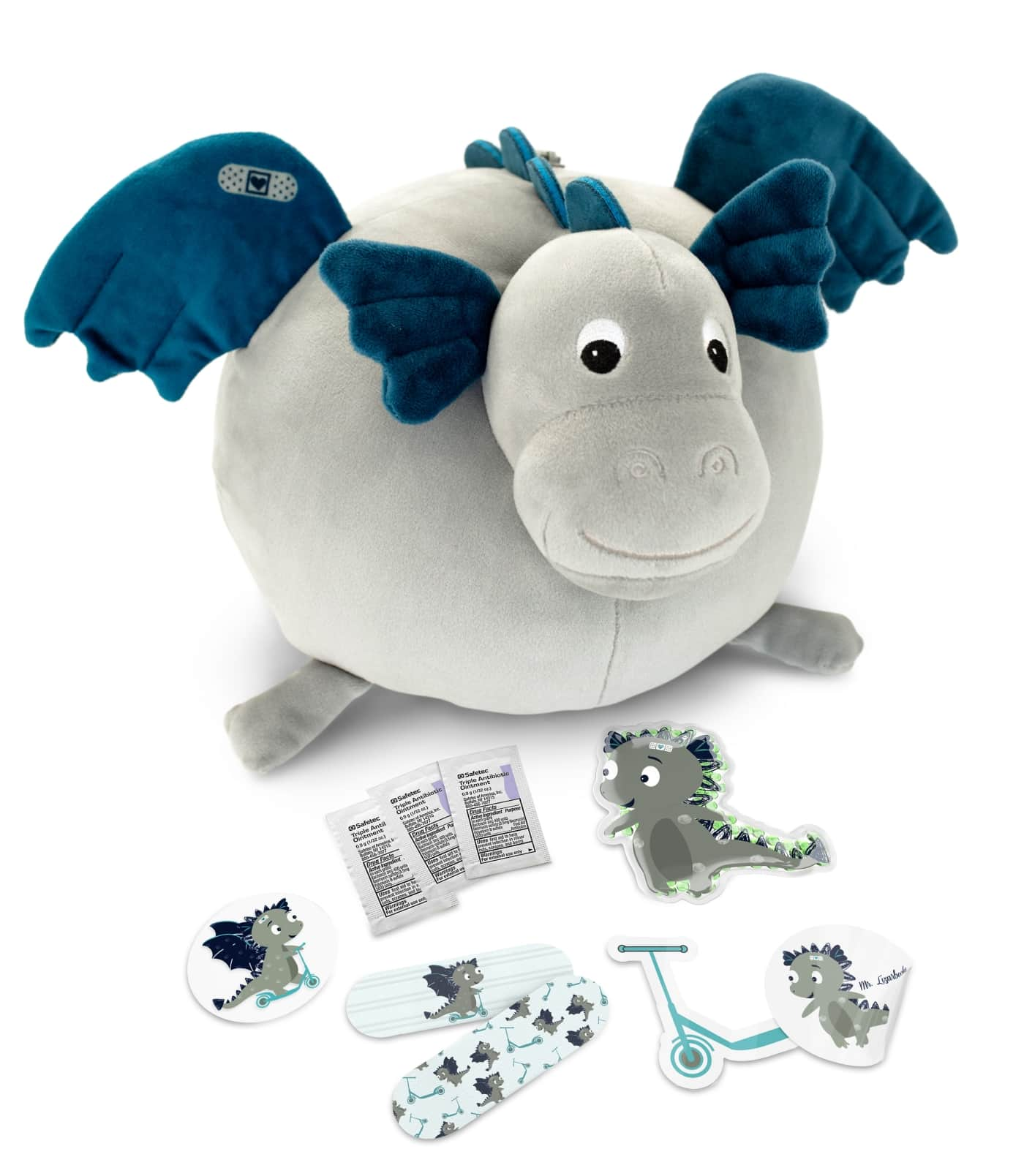Create an account to expedite future checkouts, track order history & receive emails, discounts, & special offers
OR Creat an accountMon - Fri 9am-4pm CST
hello@boobooballusa.com
FREE SHIPPING Over $75
On All U.S. Orders
My Cart
/The Boo Boo Blog

Is your toddler screaming and waking up after short intervals all through the night? Does your child fight bedtime and cry every time you try to tuck them in? Have you ever found yourself asleep on your child’s bedroom floor while trying to sneak out?
If any of these scenarios sound familiar, you must admit; something isn’t right. The kicks, hysterical screams, and inability to sleep are often signs of toddler separation anxiety at night.
Sleep troubles can be a lot for both parents and kids. Fortunately, the anxiety leading to disruptions can be dealt with. Sometimes even a warm fuzzy blanket or stuffed toy can provide all the comfort the child needs for a sound sleep. Let’s learn more.
What Is Separation Anxiety?
Separation anxiety is a normal developmental phase all babies and toddlers go through. It is an instinct of the human brain to protect oneself from danger. How we teach our children to cope with separation anxiety will leave a lasting impression on them throughout their lives.
Typical signs of separation anxiety include the inability of the child to fall asleep or direct refusal to sleep alone. This is accompanied by crying, clinging behavior, and inconsistent sleeping patterns.
Separation Anxiety Symptoms
The signs and symptoms of separation anxiety vary from child to child and depend on age. However, there are some common symptoms all parents must be aware of. The key is to accept and then help the child through the anxiety.
The better you can manage the symptoms and help them through this phase, the better it’ll help them with their cognitive development and coping abilities for the future. The most common symptoms of toddler separation anxiety at night are:
- Refusal to sleep or stay alone
- Raised anxiety when leaving home
- Screaming and flailing behavior when a stranger comes near
- Frequently waking up crying at night
- Toddlers fear strangers or people they’ve just met
- Clingy behavior or sticking with the parent or one caregiver only.
- Longer sleeping laps during the day due to lack of sleep at night.
- Nightmares
- Stomach aches and muscle aches
- Temper tantrums whenever a parent or caregiver leaves
Causes of Separation Anxiety in Toddlers
There’s still insufficient research to deduce what exactly causes separation anxiety. At times it may be due to some environmental factors and physical issues. Genetics, too, may play a role in heightened anxiety behaviors.
Other causes can include a traumatic event or learned behaviors from surroundings or family members. However, it could also be part of the standard sleep regression during certain stages of a child’s life.
Is Anxiety Common in Toddlers?
Anxiety, especially separation anxiety, is widespread in toddlers. Usually, it occurs between the ages of 6 months and three years.
Separation anxiety shows that your baby is becoming more aware of their surroundings. As a result, they can sense when their caregivers are not there and don't feel safe.
Causes of Separation Anxiety
Here are some general or most common factors that lead to anxiety in toddlers:
- Starting school/daycare
- Significant life changes like the arrival of a sibling
- Change or loss of a caregiver
- Change of house or room
- Teething or ear infection
- Imitating behaviors of emotional or tired caregivers
How Does Separation Anxiety Affect Your Toddler’s Sleep?
Separation anxiety majorly affects the toddler's ability to have a long peaceful sleep. The thought of being alone makes them resistant to going to bed. Thus, they wail and scream and cannot sleep through the night.
Some toddlers even have trouble falling back to sleep once they wake up. So that causes significant sleep disruption and leads to fussy, crying babies.
When Do I Need to Worry?
While some anxiety is normal and expected as part of growing up or changes in the child's life, this includes shifting to a new place, starting school, etc.
However, it becomes a concern once it starts affecting and disrupting day-to-day activities.
For instance, if the toddler was calm before but starts screaming and wriggling inconsolably before bedtime or at the sight of any other person (even in your presence), it is best to consult a professional for help.
The 10 Best Tips on How to Handle Your Child's Separation Anxiety
The approach to dealing with toddler separation anxiety at night is what matters in shaping your child’s mind and teaching them coping skills. Although it is hard to think with the right mind when you are sleep-deprived, take a deep breath and try these tricks to win over toddler separation anxiety and sleep troubles.
1. Self-Soothing
Try to resist the temptation to run and respond immediately to the toddler's cries. It is hard not to, but this way, they learn an essential skill called self-soothing.
Let them cry it out, but always be present at a safe distance. Comfort them if need be, but stick to your place and help them sleep in their room.
Remember, bedtime should be safe and fun. Do not make it look like a punishment ever. Play with your child, talk, and cuddle. Make them feel at ease if you want to win this battle.
2. Boo Boo Ball: Anxiety Soothing Plush Toys

Give them a stuffed toy that provides security and warmth. This will remind them of you and give them the comfortable feeling that someone they love and trust is still by their side.
These Boo Boo Ball plush toys are safe (no choking hazard) for little kids, so you can leave them in their crib to hold and look at if they ever wake up scared. These toys will help teach the little ones ‘care’ and make them feel brave to take on the world.
Play with them and the plush toy during the day, and let them take it along as you go to the mall, daycare, or even for a walk. These toys are designed to be entirely safe for toddlers and can become the BFFs of your child to hold, talk to and nuzzle against if they ever sense fear.
These also come with a secret pocket with a basic first aid kit in a hidden, zipped pocket for taking care of the little bruises that may happen during playtime.
3. No Co-sleeping
Another mistake to avoid is bringing the toddler to your bed to make them comfortable. Don't do that.
Neither should you climb into their crib. Instead, think about ways to make them comfortable in their place.
Make the bedroom a place of fun and comfort. Stay with them there during the day and plan out different activities there. The room should become their safe place.
Only then they’ll be more comfortable sleeping there at night.
4. Ease into Exit
A good strategy is to use a timer. Play and talk with your child, read bedtime stories, and finally cuddle and tuck them in. Finally, make sure to say goodbye.
Instead of leaving the instant the timer goes off, do it slowly. Give it like ten or fifteen minutes to wrap up and then leave. This will give them sufficient time to adjust to your absence and reduce their anxiety.
Consent is key. Telling your child that you will leave the room, but you still love them and are there for them will ease their stress while teaching them communication skills & trust.
5. Take Care of Yourself
Remember, you can't pour from an empty cup. Make sure you aren't getting over-stressed or acting out in the situation. Kids usually pick on these social cues and mimic them.
Stay calm. Talk to them with patience and comfort, and remember it is a phase that will pass.
However, if you feel frustrated, take a little break and ask your spouse or the other caregiver for help. Then, resume once you've calmed down.
6. Avoid Sneaking Out
While it's often tempting, and to be honest, most of us are guilty of sneaking out commando style as soon as the toddler falls asleep, avoid it. It can raise anxiety levels and a sense of distrust.
Instead, always let them know you are leaving yet will be there for them when necessary.
7. Comfort Them
While the cry-it-out method is effective, if you ever feel the need to comfort them takes over, go. They need to feel safe. Learning that when they’re upset and no one is coming to soothe them could add to their anxiety.
But make sure not to drag it. Instead, rock, pat, hug and then put them back in the crib. Consistency will be rewarded. Console your child where there is a need but ensure you let them know it is still their bedtime.
Avoid over-exciting them, talking to them, or turning on the bright lights.
8. Practice Separation
Give your child opportunities to bond with other grandparents and caregivers during the day. Let them know it's safe. This, too, will build a sense of independence in them and reassure them that things are okay even when they aren't by your side.
9. Keep Predictable Timelines
Follow a consistent routine. The more they can anticipate the situation, the less the fears and anxiety. Start with bedtime rituals so they can slowly ease into bedtime.
For example, you can try bath time before bed, storytime, pajamas, etc. Then stick to the clock for bedtime. Toddlers are very much aware of their surroundings, and even if they cannot read the clock yet, they will know what's happening and slowly adapt to the routine.
10. Check-In
Start with high-frequency check-ins every few minutes to reassure them that you are right there in the house, even if not precisely by their side. Later reduce the frequency but keep checking in. This will also build a sense of comfort and help them ease into sleep.
Separation Anxiety at Night is a Battle that Can Be Won

There are several ways to manage a toddler’s separation anxiety at night. However, the key focus should be to help them develop coping skills and learn to manage their emotions while providing a safe and comfortable environment.
It is challenging to deal with toddler separation anxiety at night. However, no matter what, make sure you validate those little feelings. Keep your cool, provide the maximum reassurance and make their room feel safe.
Use night lights and plush toys to help them cope with anxiety. Remember, it won't happen overnight, but slowly you will overcome the night fears together.








